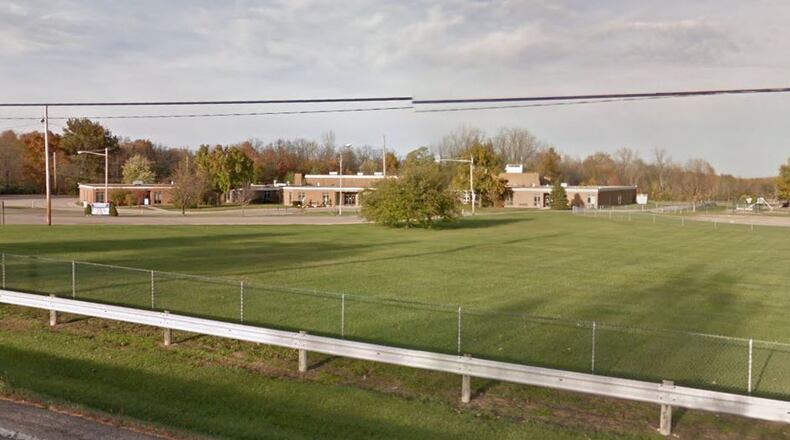MORE: First look: Early designs of proposed Oxford Amtrak station
The money will come from a state fund set up to assist districts in completing their facilities master plans but comes in the form of rebates after a certain amount of the plan has already been implemented.
In Talawanda’s case, the district was scheduled to receive 24 percent of their costs back and that was earned by completing construction of Bogan Elementary and the new high school.
Part of the money was used to build the new Kramer building and now state money will assist in the Marshall project.
“Overall, it was a wonderful day for the district and I’m quite pleased we got a green light to move forward with a badly-needed new Marshall Elementary,” Davis said of the OFCC meeting, adding that session was held in the William McKinley hearing room at the Ohio statehouse, where the Kramer funding was approved by the commission about four years ago.
As with the Kramer project, the district will fund the local share of the cost without any additional taxes using Certificates of Participation, which are bonds sold to raise the needed money and paid back using money from the district’s capital improvements fund.
MORE: Reduce library fines while helping to feed Butler County’s hungry
The only remaining hurdle to state approval of the project will be a Dec. 4 vote by the state Controlling Board to formally release the money needed for the project. It’s not a guaranteed vote, but Davis is proceeding with plans for the Marshall project in the meantime because of past history.
“Next steps for Marshall include final funding approval by Ohio’s Controlling Board which is scheduled for Dec. 4. Again, the Controlling Board only rejected one other (OFCC) funding recommendation so approval of our request is expected,” he said. “And to that end, I have already scheduled a planning meeting in Columbus in mid-November with the OFCC, bond counsel, underwriter to discuss timing for selling the COPs securities. Also, the OFCC is drafting the Architect RFQ which should be on my desk later this (past) week.
The local share of the Marshall project will be $7.5 million of the total $11.2 million cost.
“There were only two districts presented under the resolution and Mr. (Timothy) Keene specifically asked how Talawanda was funding its local share for the project. And he seemed very pleased with the response that we are using sale/leaseback financing (COPs) and not raising taxes,” Davis said.
MORE: Butler County Donut Trail makes international ‘best of’ list
Keene, the director of the Office of Budget and Management, serves as chairman of the OFCC and Davis said the commission places a strong emphasis on fiscal responsibility.
The Commission is comprised of three members. In addition to Keene, are Robert Blair, director of the Department of Administrative Services, and Gary C. Mohr, Department of Rehabilitation and Correction. Keen and Blair are on the commission by statute while Mohr was appointed to the Commission by Governor John Kasich. Several state reps and senators are also non-voting members of the commission, equally divided between Republicans and Democrats.
Charlie Jahnigen, of SHP, attended the meeting with Davis, and they had a discussion prior to the meeting with David Chovan, the COO of the OFCC.
Davis said the commission meeting also included a discussion of the new requirement that all building plans after Nov. 1 include some form or storm shelter, which will increase the cost of the Marshall project.
“I mentioned this issue at our last BOE meeting adding that it would increase our Marshall construction budget by about $400k or 3.7 percent,” Davis said. “Statewide the commission estimates it will immediately add $40 million to 31 districts or 68 building projects.”
MORE: Other businesses eye spot of Oxford restaurant that abruptly closed
This new storm shelter requirement came about due to a change in the International Building Code which became effective on Nov. 1. It requires that all K-12 buildings provide five square feet of “shelter” for each occupant and must have a wind rating 250 mph which is the equivalent of an F-5 tornado.
“Apparently FEMA has determined that Ohio is considered part of ‘tornado alley’ even though most of these weather events originate in Oklahoma, Kansas, etc.,” Davis said. “I also learned that new standard allows for gyms and/or wings of buildings to be fortified to meet these requirements. And the shelter must include lighting, restrooms, life safety and certain other accommodations. Charlie (Jahnigen) and I briefly discussed some options for Marshall which we’ll bring forward over the coming months.”
The Commission made clear they did not have the discretion to ignore this new standard and that they reluctantly approved the resolution adopting the new IBC requirement.
While in Columbus for that OFCC meeting, Davis accepted an Award of Excellence with SHP for the work at Kramer.
“I was presented with what will likely become a series of awards for our new Kramer Elementary. SHP was recognized for its Kramer design in the Fall 2017 issue of ‘Learning By Design.’ And this is a national periodical so SHP’s selection for Kramer is very high praise,” he said.
About the Author
